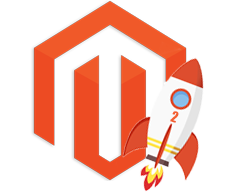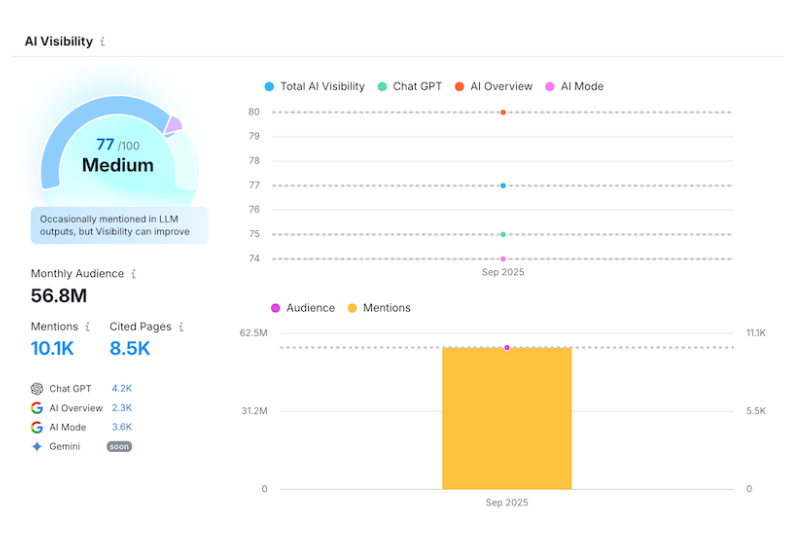 If you’re reading this, you’ve already taken the first step, so let me give you a push in the right direction. Stop thinking about upgrading to Magento 2, and start planning for it. There are a number of reasons that you might say, “Well, hang on just a gosh-darn minute buddy.” And you might be right. Each individual case is different, but in general, it’s not a question of “Should I upgrade?” as much as “WHEN should I upgrade?” With the release of Magento 2.1.x the platform is stable and has a solid base to build on to help you achieve your online business goals. So, in this developer’s opinion, the time is now.
If you’re reading this, you’ve already taken the first step, so let me give you a push in the right direction. Stop thinking about upgrading to Magento 2, and start planning for it. There are a number of reasons that you might say, “Well, hang on just a gosh-darn minute buddy.” And you might be right. Each individual case is different, but in general, it’s not a question of “Should I upgrade?” as much as “WHEN should I upgrade?” With the release of Magento 2.1.x the platform is stable and has a solid base to build on to help you achieve your online business goals. So, in this developer’s opinion, the time is now.
Technology changes rapidly, including the software stack that Magento runs on.
There are newer versions of PHP, MySql, and Apache/Nginx which all are designed to work with newer versions of software than Magento 1 was made to support. Not to mention, development methodologies change dramatically as we move further into the singularity. Specifically, in Magento 2 there are concepts of dependency injection, object management, namespacing, and other modern practices. Additionally, frontend development has changed drastically since the times of the standard styles.css file that shipped with the old versions of Magento. That means that the developer that you are going to want working on your site, that you would trust to build clean code and seamless integrations, is not going to work on a system that will quickly be seen as antiquated. Don’t get me wrong, I spent nearly a decade of my life working with Magento 1 and it will always hold a special place in my heart, but times, they are a changin’.
As you work through your decision, you might also be considering some other SaaS based solutions, but before you finalize your decision consider a few factors:
- Many SaaS based services will calculate your monthly fee based on your annual revenue, and in some cases your business might be better served as a hosted solution.
- Magento 2 has an Enterprise Cloud Edition, which lets Magento manage your hosting on AWS servers. The Cloud Edition comes with a boatload of features including BlackFire.io and the ability to spin up staging or testing environments quickly to allow you to test new features in a comparable production environment. Cloud Edition also allows Magento to push security patches into your store without the overhead of having your developer apply a patch and push it to production.
- Magento 2 might as well be a replatform, so you should be prepared to answer questions like what pieces of functionality do you want to keep or upgrade in your Magento 2 site. Also, be prepared that some marketplace modules are not yet as widely available for Magento 2 as Magento 1. If you want a theme that has a lot of modern features built in, including responsive breakpoints and mobile usability, then a variation of the default Luma theme might be just what you need to launch your store.
Tired of the same old Magento…
You might also be ready to upgrade your site to take advantage of enhanced reporting, better admin interfaces, frontend features that are pre-built for image attribute swatches, search integrations, and if you’re still on the edge, consider the amount of development hours that you are going to spend over the next 12 months working on bug fixes, new features, and other ongoing maintenance. Chances are that it will be more expensive to maintain your Magento 1 as its end-of-life approaches. When they released Magento 2, they indicated they would give merchants three years of support after the Magento 2 beta release in November of 2015. That gives you two more years of support and security patches, through the end of 2018. Of course, Magento is open source and you can run your Magento 1 site as long as you can manage it, but the question is: Do you want to?
I commonly see Magento 1 stores that have been passed from developer to developer over the course of its existence. As a result, modules were written, installed, disabled and deleted while theme files from legacy seasons are left over in the codebase. This also leaves a seemingly never-ending stream of configuration that will take hours of head banging before even the most talented developer can get to the root of what might otherwise be a simple issue. So, one benefit of upgrading to Magento 2 is a `clean codebase.`
Magento 2 also uses composer as a method to build the application, which is great because it can allow you to add requirements to a file called a `composer.json` which offloads the installation of modules to a separate process, taking the chance of mis-installation by a human out of the equation. What that means for you is that you can easily install new marketplace features, extensions, upgrades and patches without necessitating a developer in all cases. Take this with a grain of salt, however, because some of the extensions can still cause issues that will require a capable technical person to get to the bottom of.
Easily install security patches.
If you’ve read about all of the security patches in Magento 1 that are released almost twice quarterly, this might be especially appealing as security patches are able to be applied via composer in Magento 2 and tested before being deployed to its production home. There is also a suite of CLI tools for Magento 2 that make it easier to clear the cache, enable/disable modules, change the application mode, and reindex categories and products, which in Magento 1 was always a bit of a hassle. So if your site is suffering from slow indexes, hanging indexes, or deadlocks when you are attempting to save products, categories, or orders, then moving to Magento 2 Enterprise might be beneficial as you can offload some of those common processes to the rabbitMQ messaging service.
Granted, there are some challenges from the development side, as there is a considerable learning curve when beginning to develop for Magento 2, but it has been on the market long enough where many of the bugs and issues on github are starting to roll out in minor releases. There are also some new features on the horizon in the next few planed rollouts, including the newly acquired BlueFoot CMS. So if you are frustrated with the Magento 1 WYSIWYG then the enhanced admin features with BlueFoot CMS are going to help you create and manage your content better than you ever could in Magento 1.
Performance to help your business succeed.
Another benefit of moving to Magento 2 is that you will be able to process more orders per hour and have more concurrent admin sessions than was possible on Magento 1 using the same hardware. There is a lot of talk about this in the community with multiple whitepapers, but Magento has shown that with the right server configurations, using the right caching mechanisms, a faster, leaner, and more capable order processing Magento is possible. Just make sure that you partner with the right developer to achieve optimum results and server response times.
So now here’s the last question: Is your Magento 1 site slow, or do you wish it was just faster? The only potential drawback is that your Magento 2 site might not yield faster total page load times than your Magento 1 site without making sure that it configured and running on an appropriately powered machine, specifically configured to user PHP 7 and Varnish. It helps to have a development team that knows which extensions to use and how to write extensions that will not needlessly take away processing seconds from each request.
The bottom line is that for better or worse, Magento 1 is being phased out by the company that maintains it, the community of developers that supports it, and the growing list of merchants that are adopting Magento 2. As I mentioned earlier, it’s not really a matter of should you migrate to Magento 2 as much as when, and it seems likely that if you wait too long, you will be left behind by your competition that is already planning for the next holiday season sales, the next marketing push, and the next technology friend. So if you’re looking for a final word on whether or not you’re ready… don’t be nervous. Human Element is here to support you, and if you would like, we can help you navigate the waters of your upgrade to Magento 2, so let’s get going and do it!


